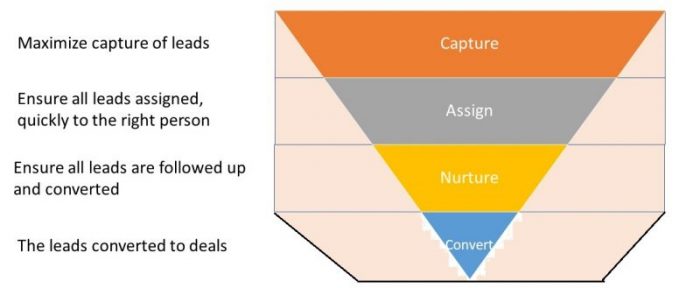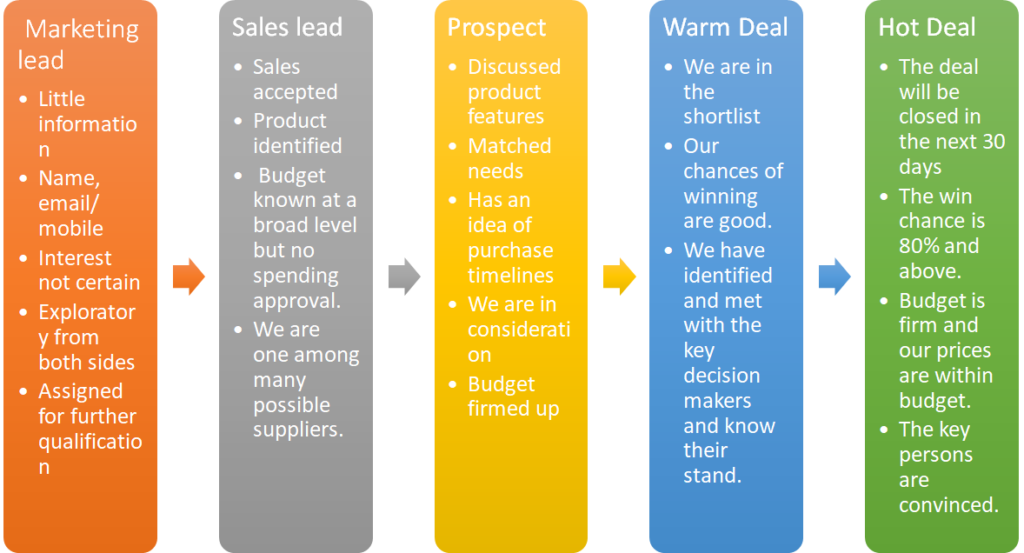7 reasons why using Excel to track sales leads is bad
Please don’t. Using Excel to track sales leads, that is. It’s a terrible idea.
Don’t get us wrong. I am one of those who have been quoted as saying, “In God we trust, rest must be backed up by Excel”. Among all the MS software that we use and we do use quite a few, this software from Microsoft is simply unparalleled in use, power and familiarity.
So, why aren’t we using Excel to track sales leads through the funnel?
Excel is free with your office 365 subscription, Saleswah is not. But, as we will see later, even that is not much of a factor. Here are a few things that Excel or Excel based lead trackers (see this, and this) just do not do.
1. Does not organize data in one place; or even link to data in multiple places.
You have a lead; that has a potential value, timeframe and associated contacts. You either will have an impossibly large and messed up spreadsheet or you will have to constantly refer to your email, PDA etc for information that proved difficult to capture in one place. If you know a excel based lead tracking software that does this well, let me know.
2. No time-stamped data capture
When you are monitoring sales activities, we need to understand things like how long an activity is overdue, when have we committed to do something, when is the next event and things like that. Getting Excel to capture that data is prone to error and requires massive efforts. And, as we will see later, prone to errors, data duplication and almost impossible to report on.
3. Welcome to data duplication.
Most of the stuff you will enter into your spreadsheet will be from information that exists elsewhere. So, you will send a quote elsewhere and copy down the value on your spreadsheet. You will have email addresses on your Outlook, mobile numbers on your phonebook/ cellphone and everytime you need to follow up on a deal, you leave your excel based lead tracker and jump into another software.
That is not how you do it in a CRM, obviously. You send a quote and it keeps the records, so even re-quoting is just a few clicks away. Your contact details are all in one place and you can keep them synced with G-Suite or Office 365. You can sync your calendar as well- and ensure no appointment is missed or no task is unattended.
4. No reporting capability:
Everytime you want a report, be prepared to spend time pivoting and massaging data. And, this is with basic “how much we will close this month?” kind of reports for single product, single market kind of companies. Excel templates for lead tracking just die when it comes to anything even a shade more complex.
5. No link, to anyone else or anything else
You have a team? Okay, then. Good luck with pulling all the data together and forecasting. Ever noticed how everyone has a different way of formatting data, inputting data or even abbreviations? And, even before we get to that, no sharing or collaboration on opportunities. No one knows what the other person in the team is doing. When a team member leaves, the data leaves too!
6. Complete absence of hierarchy in your data
You have a team, a hierarchy- reporting relationships. How do you share data on a need to know basis, strictly by hierarchy with your team members? How do they collaborate, escalate or even re-assign anything?
Such questions do not bother you when you are running your sales operations on Saleswah CRM. All customer data access is by hierarchy and bulletproof security guards it. Can you say the same about Excel?
7. Does Excel send you email or mobile triggers?
It does not; but Saleswah does. Everytime you create a sales lead or assign a task to your executive, he gets an alert on his browser, mobile app and also on email (what is task assignment, Excel will ask 😀 )
Enough said. Say goodbye to excel based lead management systems; get something much more professional and surprisingly, way more easy to use. Get your team on Saleswah.
Oh, and by the way, Excel is used for all spreadsheets- so basically, do not ever try to use any spreadsheet program to track your sales lead.



